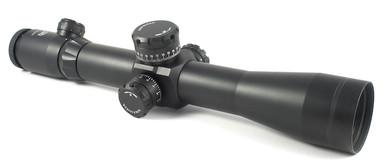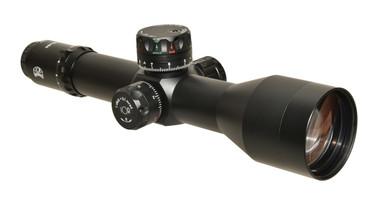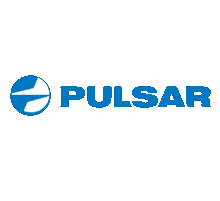Over here in Europe we hunt wild boar at night and in a lot of places the hunting laws prohibit the use of lights and thermal so you are basically using whatever natural light is there.
The preferred scope of choice is usually a big German / Austrian name (Zeiss, Schmidt und Bender, Swarovski) scope in 8x56 - Personally I use a Swaro 8x56 Kurz with an illuminated No 4 reticle.
For light transmission there are a couple of rules of thumb:
The fewer elements in a scope, the better the light transmission (Each lense the light travels through reduces the amount of light getting to your eye) so all other things being equal, a fixed scope will have better light transmission than a zoom scope.
Remember the "rule of 7" - Your eye pupil opens up to a maximum of 7mm (letting most light in) therefore you want an objective combination that will give you a 7mm image on exit. To get this, divide the objective by the magification. So
56mm / 8x = 7mm
50mm / 7x = 7mm
42mm / 6x = 7mm
(If you have ever wondered why fixed scopes tended to be sold in those measurements, there is your answer).
That formula also works for zoom scopes. So, if you have a 3-12x50 scope, for maximum light transmission set the scope no higher than 7x. So, objective lense size - do not mess around with anything less than 50mm. Do not believe the hype. Get a scope with a big front end!
Also, the higher the zoom range generally the worse the light transmission, so a simple 3x or 4x might be better than something with a very big zoom range. The zoom scope with the best light transmission Swarovski ever made is the Z4 series. I have the Z4i 3-12x50 and it's really capable in low light. (If you want a zoom scope for low light work and can find one, I would suggest the Z4i in 2.5-10x56).
A word on reticles - fussy target / tactical reticles in low light are not your friend. My advice would be something like a number 4 / duplex type with an illuminated centre dot. The reticles are thick and distinct so good against dark coloured animals in low light and the centre dot is very helpful as you put the little red marker where you want the bullet. When you start hunting turn the dot onto the lowest setting. You don't want a bright setting as it will flair when really dark and the darker it gets, the brighter your dot appears.
Set your scope up zeroed at 100 or 200 yds. Generally you don't want to be shooting far at night. So, don't be too tempted to hold over or dial. You can't see so well for hold overs nor do you want to be turning turrets when you can't see the markings - learn your MPBR and keep the ranges sensible.
Sorry if that's a long a preachy post but having tried a few things, that's what really works if you aren't going down the MV / thermal route.
Scrummy



